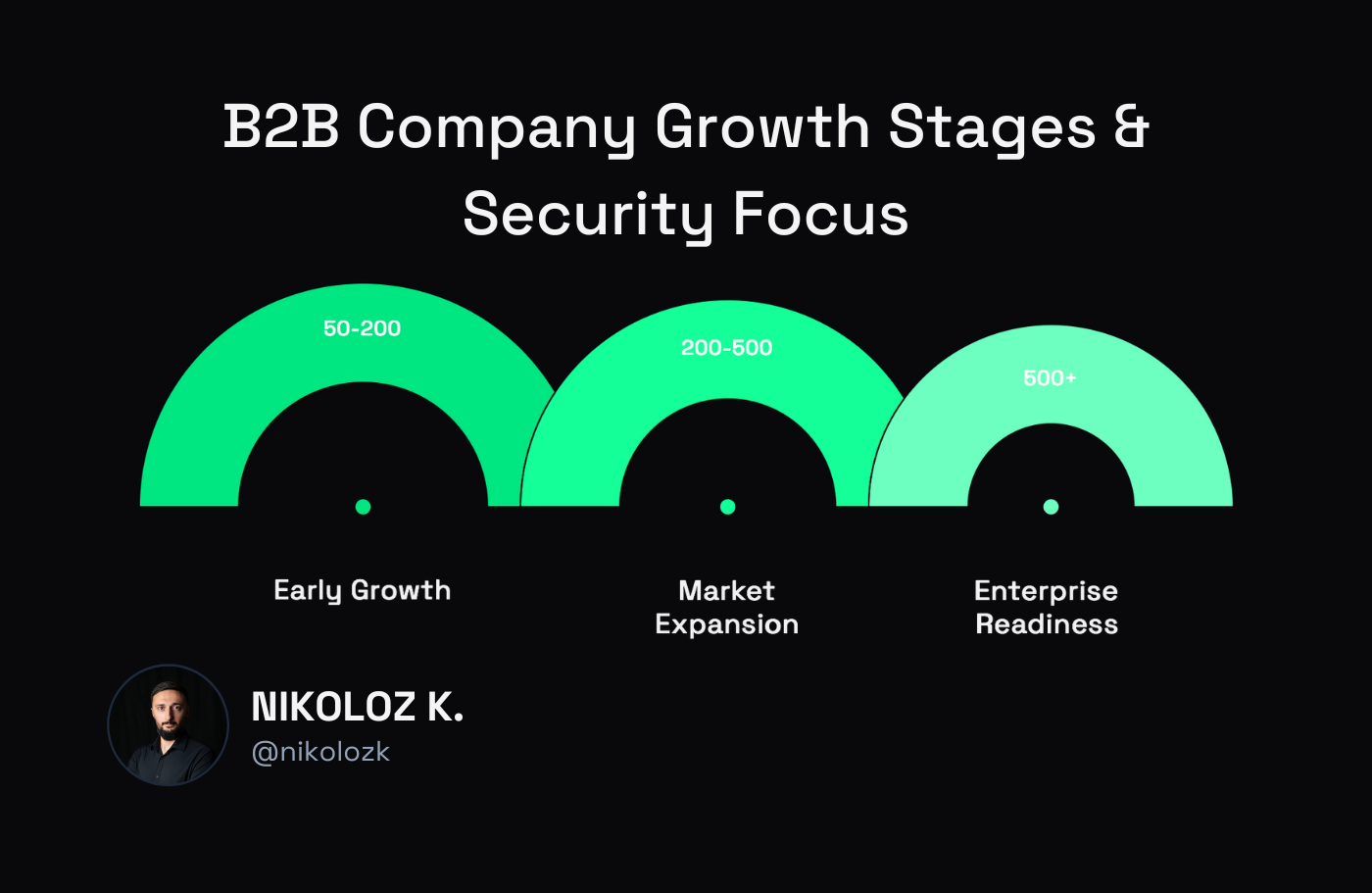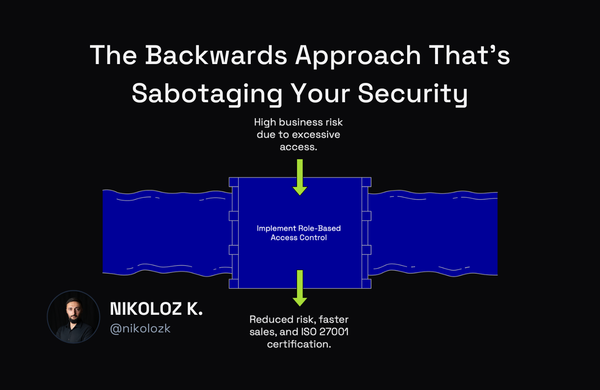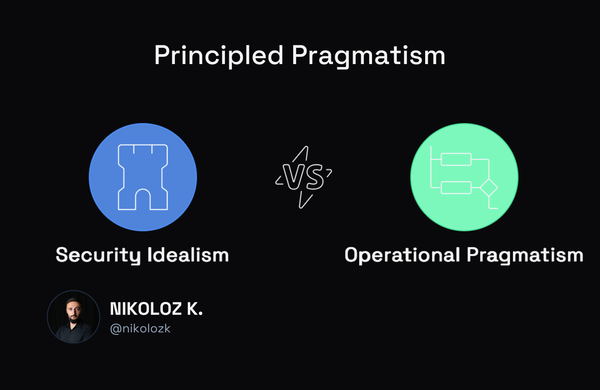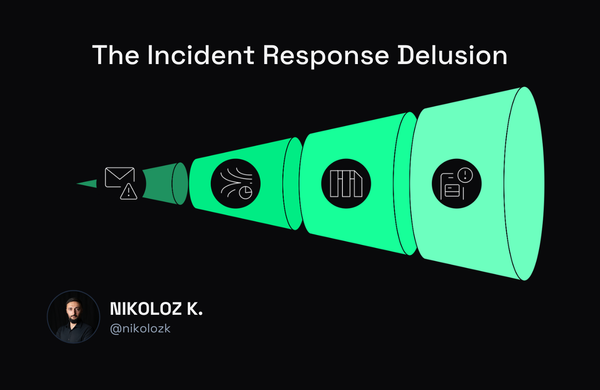Why Your B2B Company's Growth Is at Risk Without Strategic Cybersecurity Leadership

Nikoloz Kokhreidze
Most growing B2B companies make a critical mistake: they treat cybersecurity as a technical problem instead of business protection. Here's how strategic cybersecurity leadership changes everything.

Three months ago, I had a conversation with a SaaS founder that perfectly illustrates why most growing B2B companies get cybersecurity completely wrong.
His company had just lost a $2M enterprise deal because they couldn't answer security questions during the vendor assessment. The procurement team asked about their incident response plan, data encryption standards, and compliance frameworks. His CTO scrambled to provide technical documentation that missed the point entirely.
"We have great security," he told me, frustrated. "Our infrastructure is solid, we use multi-factor authentication, and our developers follow secure coding practices. Why wasn't that enough?"
The answer reveals a fundamental misunderstanding that's costing growing B2B companies millions in lost revenue and putting their entire business at risk.
The Million-Dollar Reframing That Changes Everything
What I've learned from building cybersecurity programs for dozens of organizations that have never done this before is that success starts with taking the first step to frame cybersecurity broadly.
It's not a technical problem.
Of course there are technical aspects to it, but cybersecurity is part of the larger enterprise risk management strategy that keeps everyone inside and outside of your organization safe. This includes your employees, your clients, your partners, and your business reputation.
When you frame cybersecurity this way, suddenly the conversation changes from "why do we need another IT expense?" to "how do we protect our business and the people who trust us?"
The CEO stops seeing cybersecurity as something the tech team handles in the background and starts seeing it as something that directly affects customer trust, regulatory compliance, and business continuity. This shift in perspective makes it dramatically easier to get budget, resources, and organizational buy-in.
Because now you're not asking for security tools – you're asking for business protection.
Why Technical Excellence Isn't Enough for Enterprise Deals
That SaaS founder's technical security was actually impressive. His team had implemented zero-trust architecture (sort of), automated vulnerability scanning, and comprehensive logging across their infrastructure. From a purely technical standpoint, they were more secure than many Fortune 500 companies.
But enterprise buyers don't evaluate vendor security based on technical implementation alone. They evaluate it based on risk management, governance, and the vendor's ability to protect their business relationship.
When enterprise procurement teams ask about your security program, they're really asking: "Can we trust you to protect our data, maintain business continuity, and help us meet our own compliance requirements?"
Technical security answers the "what" and "how." Strategic cybersecurity leadership answers the "why" and "what happens when things go wrong."
Is security blocking your next enterprise deal?
Let's discuss how fractional CISO services can unlock your pipeline without the full-time overhead.
The Hidden Cost of Treating Security as an IT Problem
Growing B2B companies that treat cybersecurity as purely a technical problem face predictable consequences that compound over time:
Enterprise deals stall or disappear because you can't demonstrate governance, risk management, and compliance readiness that enterprise buyers require.
Regulatory compliance becomes a reactive scramble rather than a competitive advantage, often requiring expensive consultants and delaying market expansion plans.
Security incidents create organizational chaos because there's no clear communication plan, defined roles, or business continuity strategy beyond technical recovery.
Investor due diligence reveals gaps that can delay funding rounds or reduce valuations when security is viewed as a technical afterthought rather than business enabler.
The companies that break through these barriers share one common characteristic: they have strategic cybersecurity leadership that connects security investments to business outcomes.
From Cost Center to Competitive Advantage
The transformation happens when cybersecurity moves from being viewed as a necessary expense to being positioned as business protection and competitive differentiation.
This shift requires someone who can translate technical security controls into business language, demonstrate ROI on security investments, and build programs that actually accelerate business goals rather than obstruct them.
For most growing B2B companies, hiring a full-time CISO represents a significant investment – typically €120K+ annually plus benefits, equity, and the time required to find and onboard the right person. Many companies aren't ready for that level of commitment, but they desperately need the strategic perspective that comes with experienced cybersecurity leadership.
The Strategic Advantage of Fractional Cybersecurity Leadership
Fractional CISO services bridge this gap by providing experienced cybersecurity leadership on a part-time basis, typically 1-3 days per week depending on your company's stage and needs.
This approach offers several strategic advantages for growing B2B companies:
Immediate expertise without hiring delays. Instead of spending months recruiting and onboarding a full-time executive, you get proven cybersecurity leadership that can start making an impact immediately.
Cost-effective strategic guidance. Fractional services typically cost 40-70% less than full-time executive salaries while providing the same level of strategic insight and industry experience.
Scalable engagement model. As your company grows and security needs evolve, the engagement can scale up or transition to internal leadership when the timing and budget align.
External perspective and industry knowledge. Fractional CISOs bring experience from multiple organizations and industries, providing insights that internal teams might miss.
What Strategic Cybersecurity Leadership Actually Looks Like
The difference between technical security management and strategic cybersecurity leadership becomes clear when you examine how each approach handles common business scenarios:
Enterprise sales situations: Technical teams focus on demonstrating security controls and compliance checkboxes. Strategic leadership focuses on positioning security as a competitive advantage that accelerates deal closure and supports premium pricing.
Regulatory compliance requirements: Technical approaches treat compliance as a documentation exercise. Strategic leadership builds compliance programs that streamline operations, reduce business risk, and create competitive differentiation.
Security incident response: Technical teams focus on system recovery and vulnerability patching. Strategic leadership ensures business continuity, stakeholder communication, and organizational learning that strengthens future resilience.
Budget and resource allocation: Technical security asks for tools and technologies based on functional requirements. Strategic leadership demonstrates ROI, business impact, and risk reduction that supports executive decision-making.
Is security blocking your next enterprise deal?
Let's discuss how fractional CISO services can unlock your pipeline without the full-time overhead.
Building Security Programs That Scale With Your Business
The most successful growing B2B companies build cybersecurity programs that evolve with their business model, rather than creating static compliance frameworks that become obstacles to growth.
This requires understanding how security requirements change as companies move through different growth stages:
Early growth (50-200 employees): Focus on foundational security policies, basic compliance frameworks, and security-aware culture that supports rapid scaling without creating operational friction.
Market expansion (200-500 employees): Implement governance frameworks that support enterprise sales, regulatory compliance for new markets, and security architecture that scales with increased complexity.
Enterprise readiness (500+ employees): Establish mature security operations, comprehensive risk management, and security leadership that can represent the company to enterprise customers, regulators, and investors.
Each stage requires different priorities, investments, and leadership approaches. Companies that try to skip stages or implement enterprise-level security too early often create unnecessary complexity and costs. Companies that wait too long to invest in strategic security leadership find themselves blocked from growth opportunities.
The ROI of Strategic Security Investment
When cybersecurity is approached strategically rather than tactically, the return on investment becomes measurable and significant:
Accelerated sales cycles through streamlined security questionnaire responses and confident enterprise customer conversations.
Premium pricing opportunities when security becomes a competitive differentiator rather than a checkbox requirement.
Reduced compliance costs through efficient frameworks that satisfy multiple regulatory requirements simultaneously.
Faster international expansion when security programs are designed to meet diverse regulatory requirements from the beginning.
Higher valuations during funding or acquisition when security is positioned as a business enabler rather than a cost center.
The companies that achieve these outcomes share a common approach: they invest in strategic cybersecurity leadership that connects security decisions to business outcomes.
Making the Strategic Shift
The transition from viewing cybersecurity as a technical problem to embracing it as business protection requires more than just changing terminology or reorganizing responsibilities.
It requires leadership that can bridge the gap between technical security requirements and business strategy, someone who can communicate effectively with both engineering teams and executive stakeholders, and the experience to build security programs that actually accelerate business goals.
For growing B2B companies, fractional CISO services provide the strategic perspective and industry expertise needed to make this transition successfully, without the full-time executive investment that many companies aren't ready to make.
The question isn't whether your growing B2B company needs strategic cybersecurity leadership. The question is whether you'll invest in it proactively to accelerate growth, or reactively after missing opportunities that strategic security leadership could have captured.
About Mandos: Mandos provides fractional CISO and strategic cybersecurity leadership services for growing B2B companies across Europe. Led by Nikoloz Kokhreidze, with 13+ years of experience building security programs at Forbes Cloud 100 FinTech, FMCG multinationals, banking, and global enterprises, Mandos helps companies turn security from a business bottleneck into a competitive advantage.
Ready to discuss your cybersecurity strategy? Book a free 30-minute consultation at http://cal.com/nikolozk/30min



